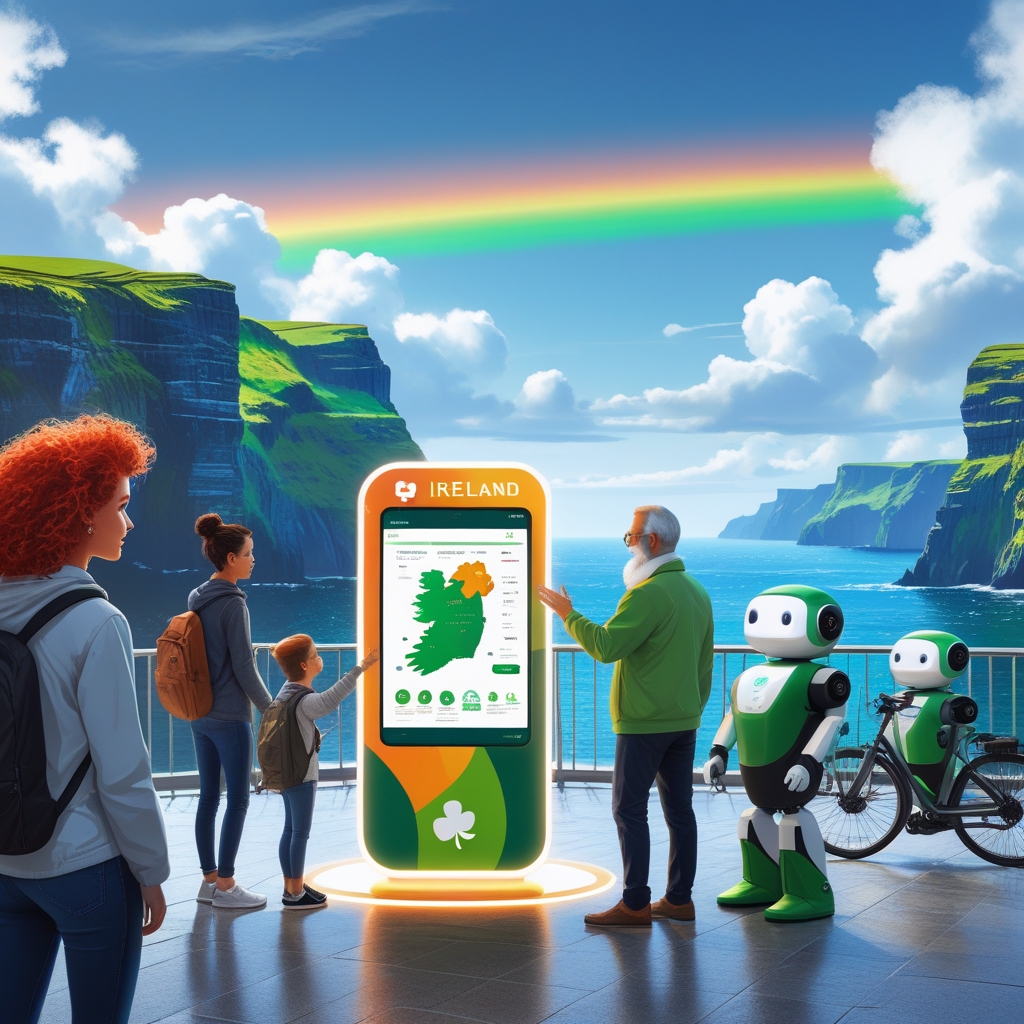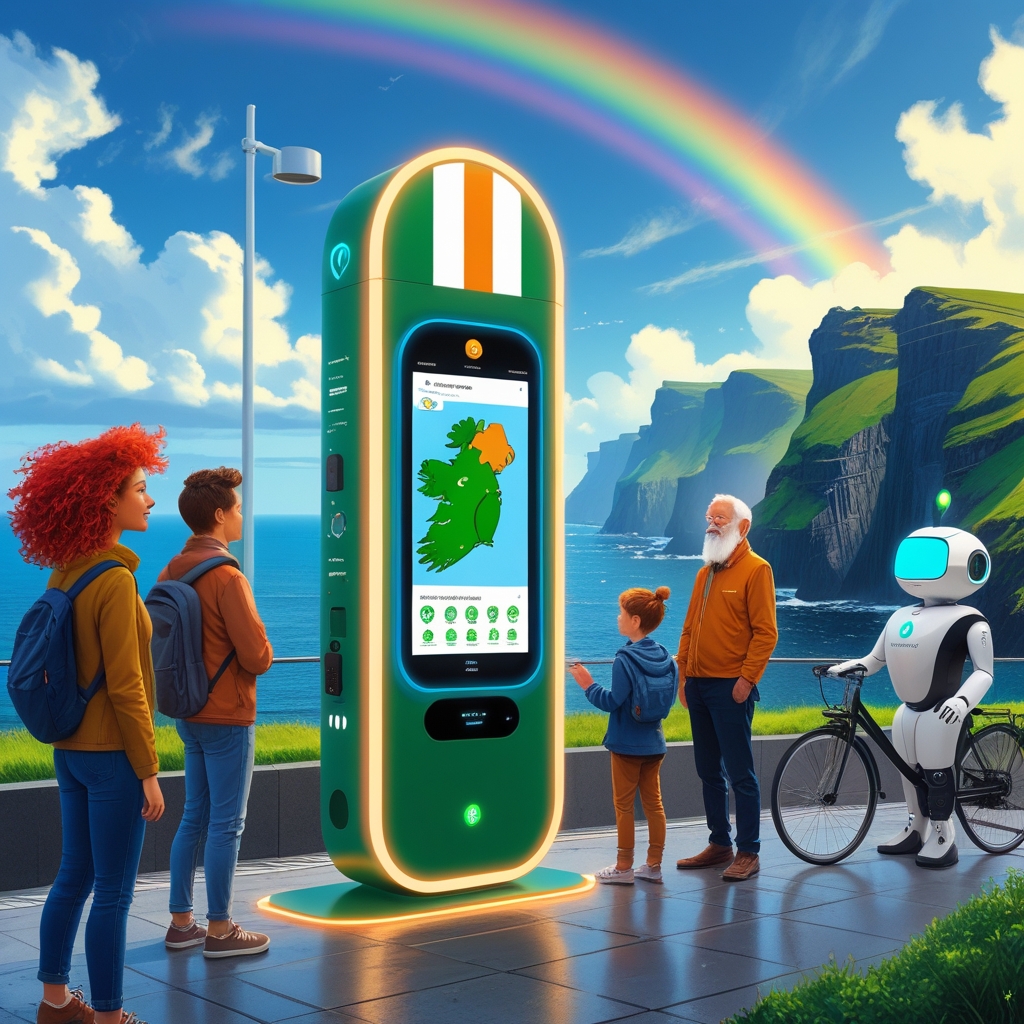
7 Epic Tools for Great Customer Support: Beyond the Helpdesk
Table of Contents
Epic Tools for Great Customer Support: Beyond the Helpdesk – Exceptional Customer Support has evolved dramatically from the days of queue-based call centres and email tickets. By 2025, digital channels will dominate interactions—chat apps, social media DMs, automated chatbots, and AI-driven self-service portals. Yet implementing these technologies effectively is key to delivering exceptional customer experiences rather than just quick fixes.
This article looks beyond the typical helpdesk software, showcasing how a suite of digital tools—collaboration platforms, knowledge bases, AI-driven CRMs, voice-of-the-customer analytics—can streamline support, personalise interactions, and even boost team morale. If you aim for top-notch service that resonates with modern consumer expectations, read on.
“At its best, digital support tools eliminate tedious wait times and guesswork, letting teams focus on the human element of empathy and problem-solving,” says Ciaran Connolly, Director of ProfileTree.
Why Exceptional Customer Support Must Go Beyond a Traditional Helpdesk
Rising Customer Expectations
Today’s consumers expect 24/7 availability or near-instant responses. If your helpdesk is only open standard business hours and swamped by a backlog, frustration grows quickly. Digital tools like chatbots and global coverage (via distributed teams) address this need for round-the-clock attention.
Multi-Channel Journeys
A customer might start by browsing your website, then message you on social media, then email a query, and finally call. Seamless handovers across channels require a system that unifies conversations. If each channel is isolated, staff can’t see the context, leading to repeated questions and user annoyance.
Efficiency and Data Insights
Traditional helpdesks might store customer queries in one big queue with minimal analytics. Modern platforms track first-response time, resolution rates, or repeated issues. Connecting this data with a CRM gives you powerful insights—like which products cause the most questions or which staff members excel at specific queries.
Essential Digital Tools to Level Up Support

Omnichannel Support Platform
Instead of separate systems for phone, chat, social, and email, an omnichannel platform integrates them into a single dashboard. Agents see conversation histories and user profiles and can seamlessly switch channels mid-conversation. This reduces confusion and ensures consistent, informed responses.
Chatbots for Immediate Assistance
AI-powered chatbots handle routine questions, such as shipping times, basic troubleshooting, or order status. This cuts queue lengths and frees human agents for complex or high-emotion tasks. Some advanced bots in 2025 even escalate seamlessly to a live agent if they detect frustration or an out-of-scope query.
Personalised Bot Experiences
By linking the bot to a customer database, it can greet returning users by name, reference past orders, or pre-fill certain details, making the chat flow smoother. Careful design ensures the bot’s tone matches your brand—friendly, concise, or playful if that suits your identity.
AI-Driven CRMs
Customer Relationship Management systems embedded with AI can:
- Auto-tag queries by topic or sentiment.
- Suggest solutions to agents in real-time based on known issue resolutions.
- Highlight cross-sell or upsell opportunities if relevant to the user’s profile.
- Forecast potential churn risk, prompting proactive outreach.
By automating repetitive tasks like logging interactions or drafting summary notes, AI CRMs keep the focus on genuine engagement.
Knowledge Base and Self-Service Portals
Many customers prefer a do-it-yourself approach, especially tech-savvy demographics. A well-structured, frequently updated knowledge base—containing FAQs, how-to guides, troubleshooting articles, short explainer videos—empowers users to solve issues instantly, without waiting for an agent. Integration with a search bar or AI-driven suggestion system ensures they find relevant solutions quickly.
Collaborative Communication Tools
Internally, support teams benefit from real-time messaging platforms (like Slack or Microsoft Teams) plus integrated file-sharing. If a user question requires input from the finance department or an external partner, the agent can quickly loop them in. This drastically reduces resolution times, preventing the dreaded “We’ll call you back once we get an internal update.”
Key Features and Benefits of Modern Digital Tools
Unified Customer View
When all interactions funnel into a single record, agents can see past chats, previous product orders, complaint history, or loyalty status. This context helps the agent tailor responses, reducing user frustration (“You already asked me that yesterday!”). The brand gains a more personal, consistent tone across every support channel.
Automated Workflow and Routing
Inbound queries can be auto-triaged—technical issues route to the tech team, billing queries to accounting, and VIP customers escalate to senior agents. This cuts manual sorting, shortens wait times, and applies relevant expertise from the get-go.
Real-Time Analytics and Reporting
From dashboards showing the average response time to in-depth sentiment analysis across thousands of chats, managers can monitor performance. They can see if a certain product defect is causing a spike in complaints or if certain times of day require more staffing. With these insights, your support strategy evolves to stay optimal.
Scalability
In 2025’s digital-first environment, support volumes can fluctuate, especially during sales promotions or product launches. Cloud-based systems let you add agent seats, integrate remote staff, or deploy additional chatbots quickly. No more frantic expansions of phone lines or rewriting entire helpdesk code.
Implementing These Tools: Best Practices

Start with a Needs Assessment
Before adopting or upgrading support tech, map out:
- Typical customer queries (technical, account-based, shipping, etc.).
- Volume: how many daily interactions are expected per channel?
- Existing systems: do you have a CRM or separate order tracking system?
- Budget and timeline: how quickly must you deploy?
This ensures you choose solutions that align with your actual workflow, preventing overspending on unnecessary features or missing vital capabilities.
Ensure a Human Touch
Despite automation, some issues demand empathetic human interaction—like complex refunds or sensitive complaints. Provide an easy “escape route” from chatbots to live agents. Train staff to read the context and switch to phone or video call if needed. Overreliance on bots can appear robotic and frustrate users wanting nuanced help.
Train Your Team Thoroughly
Transitioning to an omnichannel setup or AI-based CRM can be daunting for staff used to simpler helpdesk systems. Conduct hands-on training sessions, create quick reference guides, and encourage a can-do mentality. Let them see the benefits: reduced manual tasks, better customer context, and fewer angry escalations.
“A digital tool is only as good as the people using it. Invest in staff training if you want your platform to deliver top-tier customer experiences,” advises Ciaran Connolly.
Maintain Knowledge Base Currency
A stale knowledge base frustrates users who find outdated solutions or broken links. Assign content owners to regularly update articles, remove obsolete references, and add new tips for emerging questions. If launching a new product version, upload fresh tutorials or release notes simultaneously.
Monitor Metrics and Iterate
Check key support metrics weekly or monthly:
- First Response Time: Aim for minutes rather than hours on live channels.
- Resolution Rate: Are issues resolved fully, or do they bounce back frequently?
- Customer Satisfaction (CSAT): Gather post-interaction ratings or short surveys.
- Agent Productivity: Ensure no team member is overloaded or consistently dealing with escalations beyond their expertise.
Adjust staffing schedules, chatbot scripts, or help articles accordingly.
Overcoming Common Challenges
Fear of Automation Replacing Human Roles
Some staff may worry chatbots or AI reduce the need for agents. Emphasise that automation handles repetitive tasks, freeing them for complex or high-value issues. This shift can be beneficial—agents develop problem-solving or cross-selling skills, raising job satisfaction.
Data Silos and Integration Issues
If your e-commerce system or marketing platform doesn’t integrate smoothly with the new support system, your “unified view” falters. Plan the tech stack carefully, choosing open APIs or modules that communicate well. Engage IT or external consultants if needed.
Maintaining Personal Warmth
Automation might lead to robotic communications if not carefully designed. For chatbots, add a friendly, brand-aligned tone—complete with polite greetings and straightforward language. Train agents to keep personal touches, like using the customer’s name and referencing previous chats.
Digital Discrimination
Some customers may be less tech-savvy or prefer phone calls. Offer a multichannel approach with phone lines or offline solutions for those who struggle with chatbots. In 2025, the digital-first approach reigns, but inclusivity remains crucial for those who aren’t comfortable with advanced tools.
Next-Level Approaches to Digital Support

AI Speech Recognition for Voice Calls
In the quest for Exceptional Customer Support, businesses are looking beyond typed chat by leveraging advanced speech recognition to transcribe calls in real-time. This AI-driven approach prompts suggested solutions or highlights keywords, reducing the need for manual search. Agents can then swiftly access recommended articles mid-call, significantly speeding up resolution times. By seamlessly bridging phone conversations and AI systems, these tools inject a new level of efficiency without sacrificing empathy. Ultimately, each interaction becomes more streamlined and human-centric—a hallmark of Exceptional Customer Support.
Proactive Support with Predictive Data
Harnessing predictive data is a key step toward delivering truly Exceptional Customer Support. If an e-commerce user repeatedly visits the returns page or chat section, systems can proactively offer assistance—such as suggesting the correct size or clarifying a shipping policy. Similarly, IoT-enabled products that detect potential malfunctions can automatically generate a support ticket before a complaint ever arises. This forward-thinking approach not only resolves issues faster but also fosters trust by demonstrating genuine care for customer needs. When executed correctly, proactive support cements brand loyalty and redefines customer expectations.
Personalised Video Assistance
Personalised video assistance elevates Exceptional Customer Support by enabling brands to provide one-to-one video calls or concise, customised video responses for intricate questions. Agents can quickly record a screencast that demonstrates how to solve a specific problem, assemble a product, or navigate a tricky process. This direct visual communication eliminates confusion and caters to various learning styles. By transforming complex instructions into easily digestible clips, brands make customers feel truly seen and supported. The result is a more engaging, effective support experience that keeps satisfaction high and fosters ongoing loyalty.
Linking Customer Support Tools to Overall Experience
Cross-Department Collaboration
Marketing often claims they prioritise “customer experience,” but if they remain siloed from support, marketing campaigns might not align with real user issues.
Regular cross-department meetings create transparency, allowing marketing teams to see support metrics firsthand.
With direct insight into pain points, they can tailor campaigns to align with real customer concerns and foster Exceptional Customer Support.
This alignment not only refines brand messaging but also enhances overall customer satisfaction.
When marketing and support work hand in hand, customer-centric strategies flourish from every angle.
Feedback to Product Development
Support logs reveal essential product feedback—shedding light on user confusion, preferences, and recurring pain points.
Collating these insights and presenting them to product teams strengthens Exceptional Customer Support by integrating real-world context into design decisions.
Closing this loop ensures modifications directly address genuine user needs, reducing future friction.
Enhancements resulting from actual support data minimise guesswork and elevate product quality.
Ultimately, a tightly aligned feedback process boosts user satisfaction and cements brand loyalty.
Integrating AI Training for Staff
In 2025, advanced chatbots or AI CRMs can significantly streamline workflows, yet they’re not always intuitive, especially if you aim for Exceptional Customer Support.
Tailored training ensures agents master features like automated note-taking or rapid knowledge base scanning.
This balanced combination of human skill and digital innovation delivers faster resolutions without sacrificing empathy.
As staff grow comfortable with AI-driven platforms, they’re better equipped to handle complex queries and maintain Exceptional Customer Support standards.
Continual learning and adaptation empower businesses to remain agile in a dynamic customer service landscape.
Measuring Success in Digital Customer Support

Critical KPIs
- Average Resolution Time: Shorter is usually better, but watch for quality.
- First Contact Resolution (FCR): The percentage solved in a single interaction. High FCR indicates clarity and empowerment for agents or chatbots.
- CSAT or NPS: Quick surveys post-interaction gauge how satisfied customers feel or how likely they’d recommend you.
- Agent Utilisation: Check if staff remain fully occupied or if certain channels are overloaded.
- Escalation Rate: If too many queries escalate, either the chatbot is undertrained or agent guidelines need refining.
Ongoing Refinement
Review these KPIs monthly, alongside any anecdotal feedback or repeated friction points. Tweak chatbot scripts, reassign staff based on skill sets, or add new knowledge base content. Encourage a “fail fast, learn faster” mindset so the support function evolves in lockstep with shifting user needs.
Embrace Digital, but Keep It Human
In 2025, delivering Exceptional Customer Support demands a robust digital ecosystem that merges omnichannel, AI-aided tools, and collaborative platforms. The result is quicker resolutions, fewer repetitive tasks, and a cohesive brand image. Yet technology alone doesn’t guarantee satisfaction—training, personal warmth, and thoughtful integration remain non-negotiable.
By upgrading from a basic helpdesk to an advanced digital suite—one that unifies interactions harnesses AI insights, and ensures staff can provide empathetic assistance—you foster loyalty and a reputation for Exceptional Customer Support. This holistic approach positions your brand to meet the needs of modern consumers who value efficiency without sacrificing humanity.
Ultimately, the payoff is happier customers, streamlined operations, and a support team that thrives on delivering Exceptional Customer Support. When technology and human empathy align, brands can exceed expectations, solidify customer relationships, and maintain a distinctive, customer-centric edge.
Balancing Automation and Empathy
As businesses adopt more sophisticated AI tools, a delicate balance must be struck between automation and preserving a personal touch to ensure Exceptional Customer Support. Automating repetitive tasks frees agents to focus on empathy, creative thinking, and deeper rapport with customers. This synergy ultimately improves the overall experience, ensuring issues are resolved both swiftly and humanely.
Human empathy remains irreplaceable, especially in complex or sensitive scenarios. While AI can detect frustration or classify sentiment, it still struggles with the nuances of compassion or emotional reassurance. In these moments, a skilled human agent can build trust and goodwill, turning potential conflicts into opportunities to strengthen Exceptional Customer Support.
Businesses can further enhance empathy by blending AI insights with human intuition. Real-time prompts based on sentiment analysis can alert agents to tension, enabling them to deploy reassurance or special offers. By uniting AI’s efficiency with authentic human compassion, support teams deliver outstanding customer experiences reflecting modern innovation and timeless interpersonal connection—hallmarks of Exceptional Customer Support.
Conclusion: Embrace Digital, but Keep It Human
Exceptional Customer Support in 2025 demands a robust digital ecosystem that merges omnichannel, AI-aided tools, and collaborative platforms. The result is quicker resolutions, fewer repetitive tasks, and a cohesive brand image. Yet technology alone doesn’t guarantee satisfaction—training, personal warmth, and thoughtful integration remain non-negotiable.
By upgrading from a basic helpdesk to an advanced digital suite—one that unifies interactions, harnesses AI for insights, and ensures staff can deliver empathetic assistance—you’ll foster loyalty and a reputation for Exceptional Customer Support.
The payoff is happier customers, streamlined operations, and a support team that thrives on effectively meeting and exceeding expectations—genuinely fulfilling the promise of Exceptional Customer Support.




